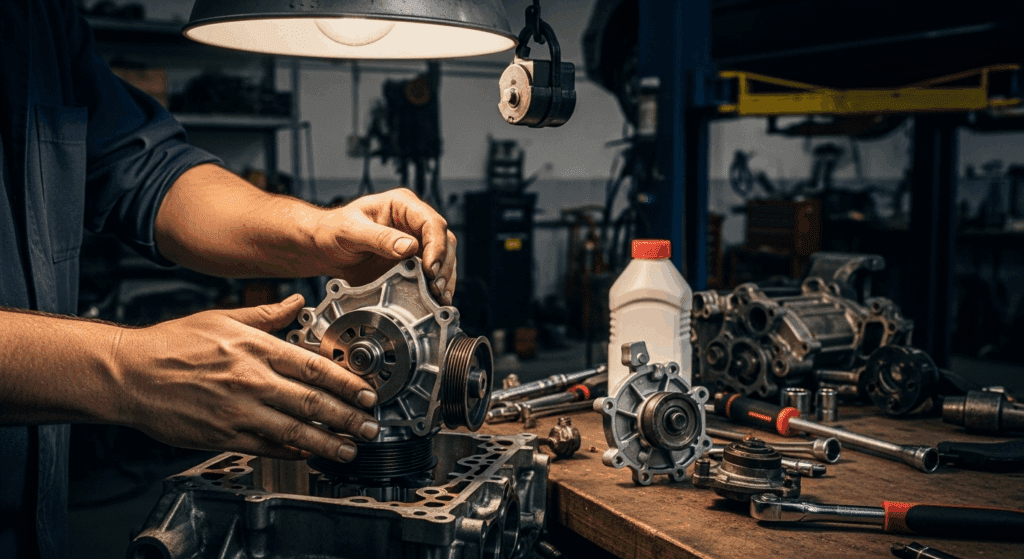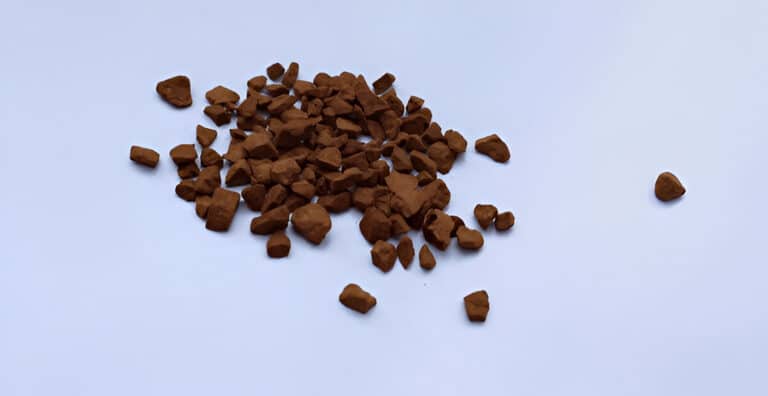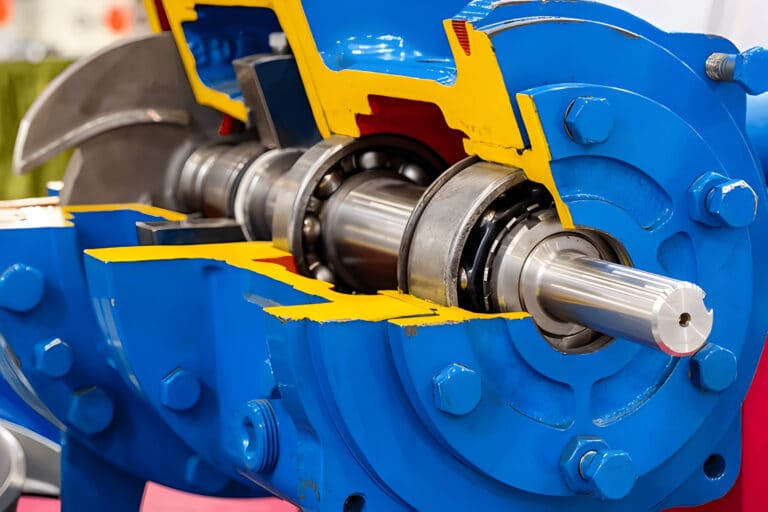Ignoring a failing water pump will destroy your engine—it’s that simple. This small component circulates coolant through your engine to prevent it from overheating, and when it fails, the damage starts immediately and gets exponentially worse.

Engine Overheating
Your engine will overheat within minutes of a water pump failure. Without coolant circulation, the heat from combustion has nowhere to go, causing temperatures to spike from a normal 195-220°F to over 250°F in less than five minutes of driving.
You’ll see the temperature gauge climb into the red zone almost immediately. Steam might start pouring from under your hood, and you’ll smell that distinct sweet-and-burnt odor of overheated coolant.
This overheating happens because your engine generates enormous heat—enough to melt aluminum parts if not constantly cooled. The water pump normally moves about 7,500 gallons of coolant through your engine every hour at highway speeds, and without that flow, heat builds up like a pot left on a stove with no stirring.
Coolant Leaks and Loss
A damaged water pump will leak coolant, creating puddles under your car and leaving you with an empty cooling system. The leak usually starts small—maybe just a few drops—but quickly becomes a steady stream as the pump’s seals deteriorate.
You’ll notice green, orange, or pink fluid pooling under the front of your car, especially after it’s been parked overnight. The leak gets worse when the engine is running because the system is under pressure.
Once you’ve lost enough coolant, air pockets form in the cooling system. These pockets create hot spots that accelerate engine damage, turning what could have been a $400 repair into a $4,000 engine replacement.
Head Gasket Failure
Extreme heat from a failed water pump will blow your head gasket—the critical seal between your engine block and cylinder head. This typically happens when temperatures exceed 240°F for more than a few minutes.
A blown head gasket means coolant mixes with your engine oil, creating a milky, chocolate-milk-like substance that can’t lubricate anything. You’ll see white smoke billowing from your exhaust as coolant burns in the combustion chambers.
This failure alone costs $1,500 to $3,000 to repair because mechanics must disassemble the top half of your engine. But here’s the real problem: by the time your head gasket fails, you’ve likely damaged other components too.
Cracked Engine Block or Cylinder Head
Severe overheating will crack your engine block or cylinder head, essentially totaling your engine. These cracks happen when metal parts expand unevenly from extreme heat, then cool too quickly.
Imagine heating a glass dish in the oven, then plunging it into ice water—it shatters. The same thing happens to your engine’s metal components when they reach 260°F or higher.
Once cracked, these parts can’t be reliably repaired. You’re looking at either a complete engine replacement ($3,000-$8,000) or scrapping the vehicle entirely.
Seized Engine
The worst-case scenario is a completely seized engine, where internal parts literally weld themselves together from heat. This happens when oil breaks down from extreme temperatures and metal parts expand beyond their tolerances.
Your engine will make a horrible grinding noise, then suddenly stop—permanently. The pistons fuse to the cylinder walls, bearings melt into the crankshaft, and the entire engine becomes one solid, useless block of metal.
At this point, you’re not fixing anything. You’re either buying a new engine or a new car, and towing is your only option to get anywhere.
Ancillary Damage
A failed water pump doesn’t just damage your engine—it destroys multiple supporting components:
Radiator
Your radiator can crack or blow apart from pressure buildup when coolant can’t circulate properly. The plastic tanks on modern radiators are especially vulnerable, splitting at the seams when internal pressure exceeds 15-20 PSI.
Thermostat
The thermostat often gets stuck closed from extreme heat cycles, compounding cooling problems. Even after replacing the water pump, you’ll need a new thermostat to restore proper coolant flow.
Drive Belt and Pulleys
The serpentine belt that drives your water pump can melt or snap from the heat. When it fails, you lose power steering, alternator function, and air conditioning—leaving you truly stranded.
The pulleys themselves can warp or seize, requiring replacement of the entire accessory drive system. This adds hundreds more to your repair bill.
FAQs
How long can you drive with a bad water pump?
You can drive zero miles safely with a completely failed water pump. With a failing pump showing early symptoms, you might manage 20-30 miles before causing serious damage, but every mile increases repair costs exponentially.
What are the first signs of water pump failure?
The first signs include coolant leaks under your car, whining or grinding noises from the front of the engine, engine temperature fluctuating unusually, and steam coming from the radiator.
Can I add stop-leak products instead of replacing the water pump?
Stop-leak products won’t fix a failed water pump and can clog your radiator and heater core. They’re a temporary band-aid at best and often cause more expensive problems than they solve.




